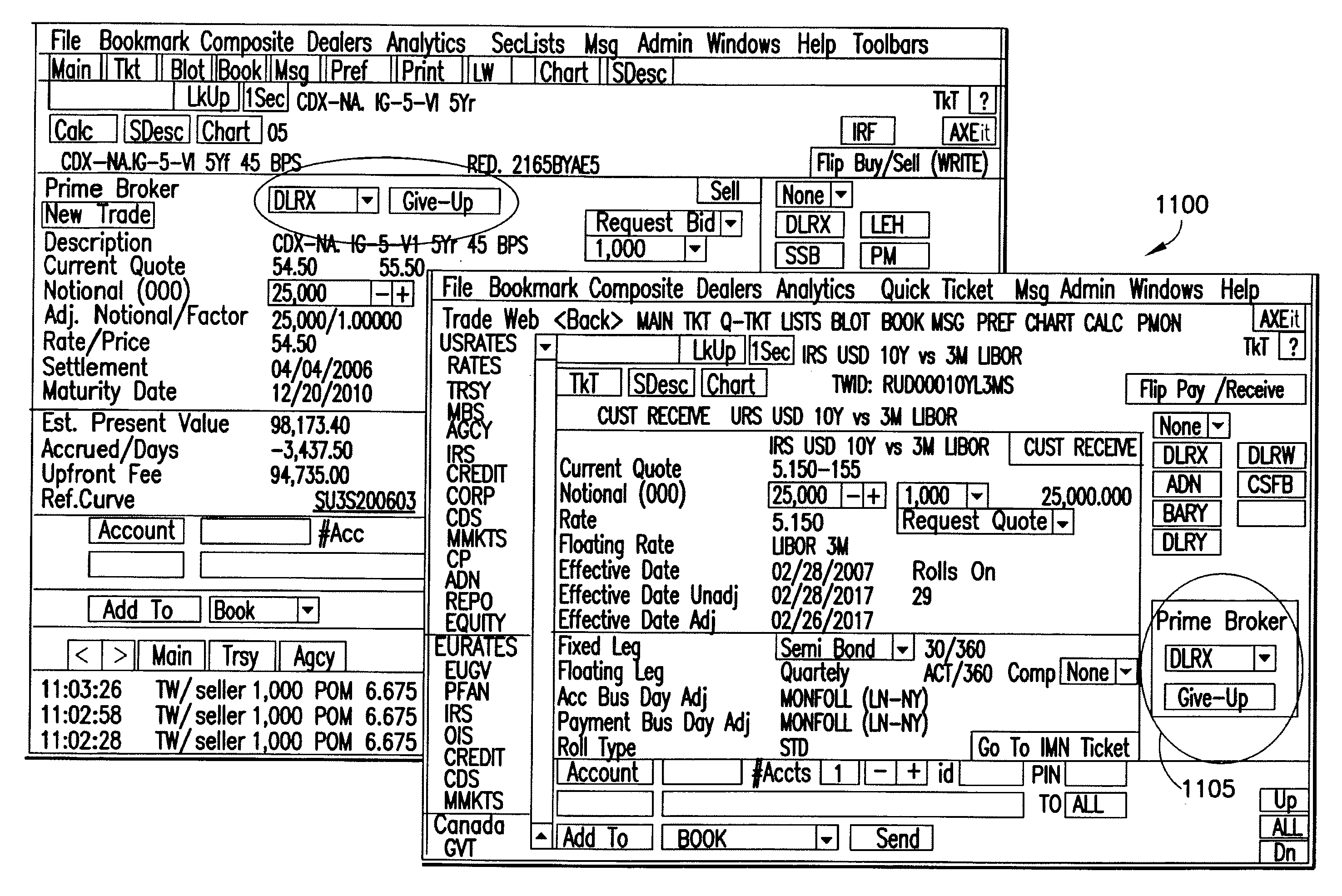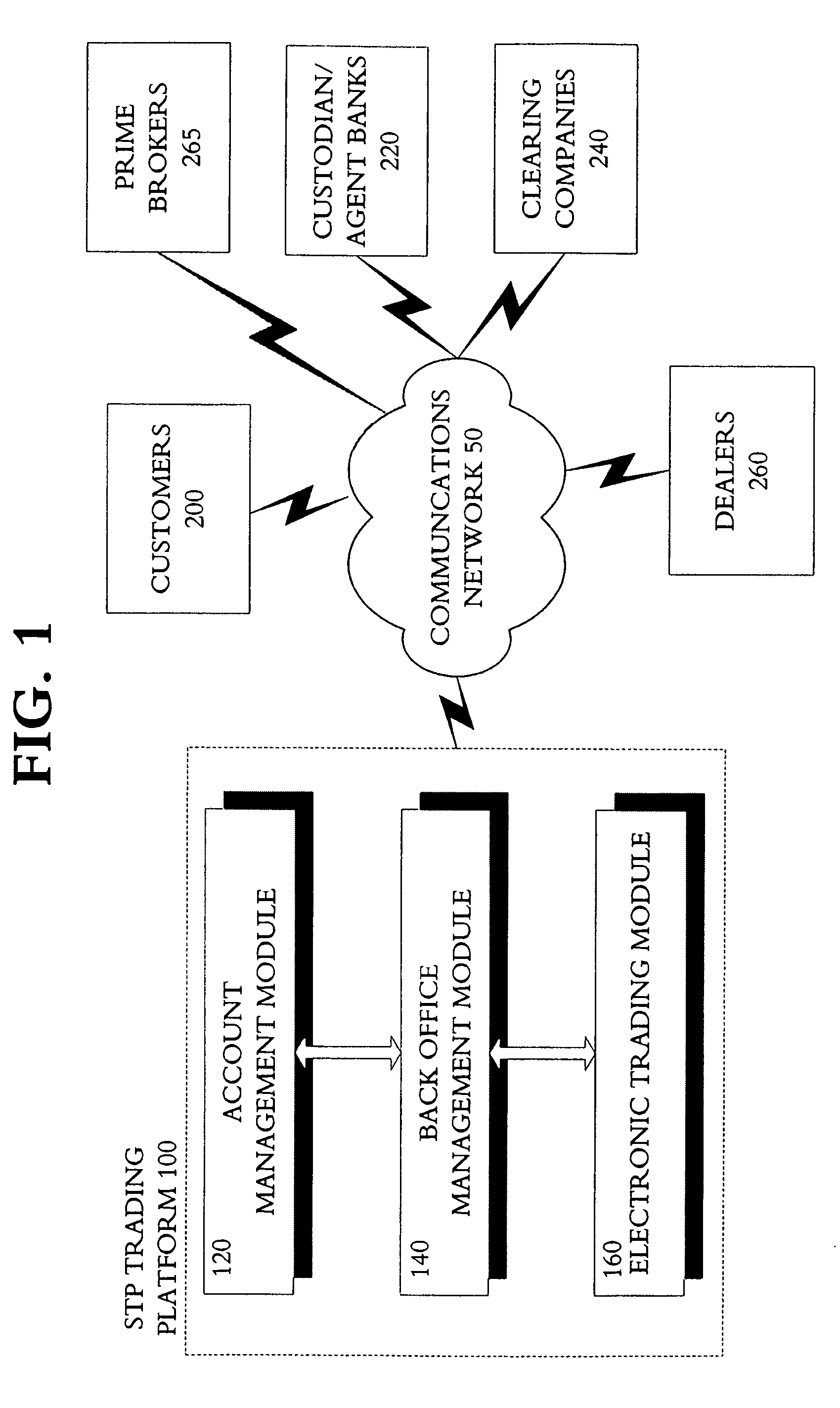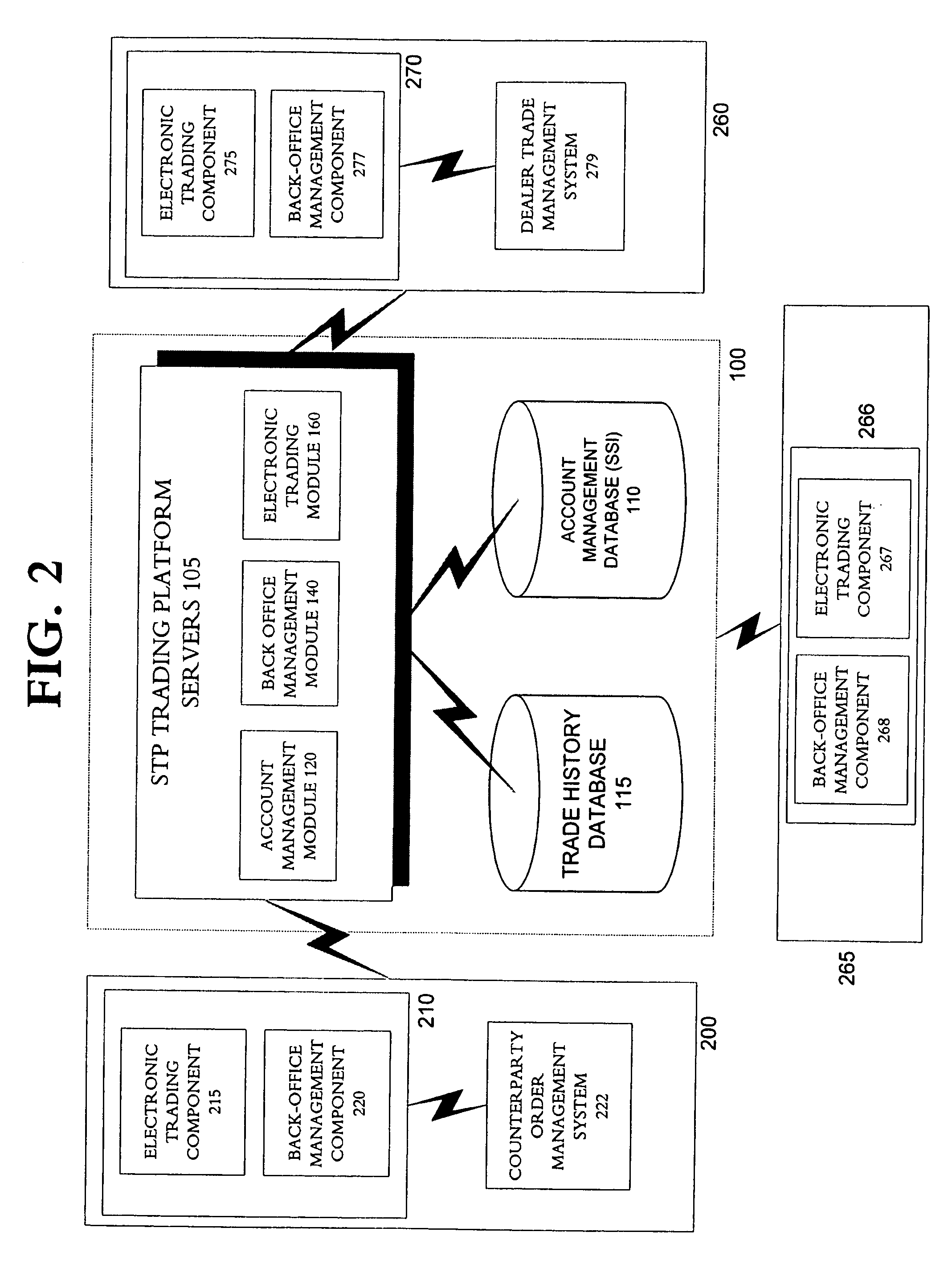Fixed income instruments, such as treasuries, mortgages, commercial paper offerings, corporate and government bonds, and the like, traditionally have been traded using an inefficient, error-prone manual process.
While such
automation represents an improvement to the manual process, many of the problems and inefficiencies associated with the traditional, manual process still exist.
These processes are prone to error due to the manual nature of the recordation process.
In order to create the Rule 10b-10 confirmation, the dealer would manually extract the details of the trade, such as those passed on the trade
ticket, and create a paper confirmation—an inefficient process prone to potential
human error.
Again, this manual process was open to
human error, not only in providing and recording the proper instructions, but also in propagating the correct instructions to the other back office personnel responsible for other functions, such as confirmation and settlement.
Thus, the manual trading and settlement process was prone to errors and often took several days to complete.
In general, although the
electronic trading systems have several advantages over the manual process, such
electronic trading systems have focused on the discreet parts of the trading cycle and, consequently, suffer from a lack of compatibility and
interoperability.
Furthermore, existing electronic trading systems, in large part, simply automate the manual process and thereby perpetuate the inefficiencies of the manual process and fail to provide needed new functionality.
As discussed below, because existing electronic trading systems lack compatibility across the various stages of the trade cycle and fail to automate key post-trade functions, existing systems have failed to eliminate significant
sources of error and inefficiencies.
More specifically, because electronic trading systems are directed to discreet parts of the trading cycle, such systems do not adequately provide a means to achieve straight-through
processing (STP) of trades, namely, to execute block trades, allocate block trades to sub-accounts, confirm the trade, details, allocations and settlement instructions, and settle the trades based on such information.
Absent custom-built communication interfaces, a
system directed to one aspect of the trade cycle typically cannot automatically pass recoded information to a
system directed to another aspect of the trade cycle.
As a result, the post-trade confirmation and settlement process remains open to possible
human error, even where electronic trading systems are used.
Moreover, typical electronic post-trade allocation confirmation systems are often incompatible with electronic settlement instruction databases and systems that provide trade details regarding trades executed in non-electronic formats, such as via telephone, thereby forcing dealers to maintain redundant systems.
Although an improvement to traditional manual processes, unnecessary duplication of records and potential delays with delivery of trade details, allocations, confirmations and settlement instructions and in the settlement of trades still exist.
Similarly, although many market participants have begun using electronic back office trade management systems, such systems are typically incompatible with front office electronic trade execution systems.
In short, the electronic trade allocation and settlement of fixed-income instruments remains a fractured process that is subject to inefficiencies and errors and prevents efficient straight-through-
processing of trades.
Furthermore, efficiencies provided by existing electronic trading systems are typically limited to only a portion of a dealer's or customer's trading volume.
These
electronic systems, while providing increased efficiency for trades conducted on each
system, are incompatible with each other and with manual processes, making it impossible to recognize a benefit of one system across all phases of the trading cycle.
Indeed, such disparate systems can add to the complexity and inefficiency of management of a customer's or dealer's entire trading volume.
The inefficiencies of existing
electronic systems are further exacerbated due to the lack of uniformity across market participants.
Because trades must be accepted and confirmed at least by the two parties to the trade (and sometimes third and fourth parties), and because different parties often utilize incompatible systems, there is presently no system available that can process trades from generation to execution to allocation to confirmation and finally to settlement to achieve true straight-through
processing of trades.
In addition to incompatibility among electronic trading systems limiting their effectiveness, existing electronic trading systems simply have automated the traditional, manual process without changing the general trading-cycle paradigm and without adding new features to enhance the
usability or efficiency of the systems.
As such, the existing electronic trading systems have many of the inherent inefficiencies as the manual trading.
Moreover, because most existing fixed-income electronic trading systems merely implement the traditional customer inquiry-based and inventory-based trading paradigms, such electronic trading systems do not provide a means for permitting dealers to initiate trading by transmitting
executable, firm trade offers.
These systems, however, are inefficient for the transmission of axes for several reasons.
Such systems do not permit the transmission of
executable axes that are actionable by one or more customers to execute a trade.
While there has been some
automation of certain aspects of the trading process involving prime brokers, many problems and inefficiencies still exist in the inclusion of a prime broker in a
financial transaction.
 Login to View More
Login to View More  Login to View More
Login to View More 


